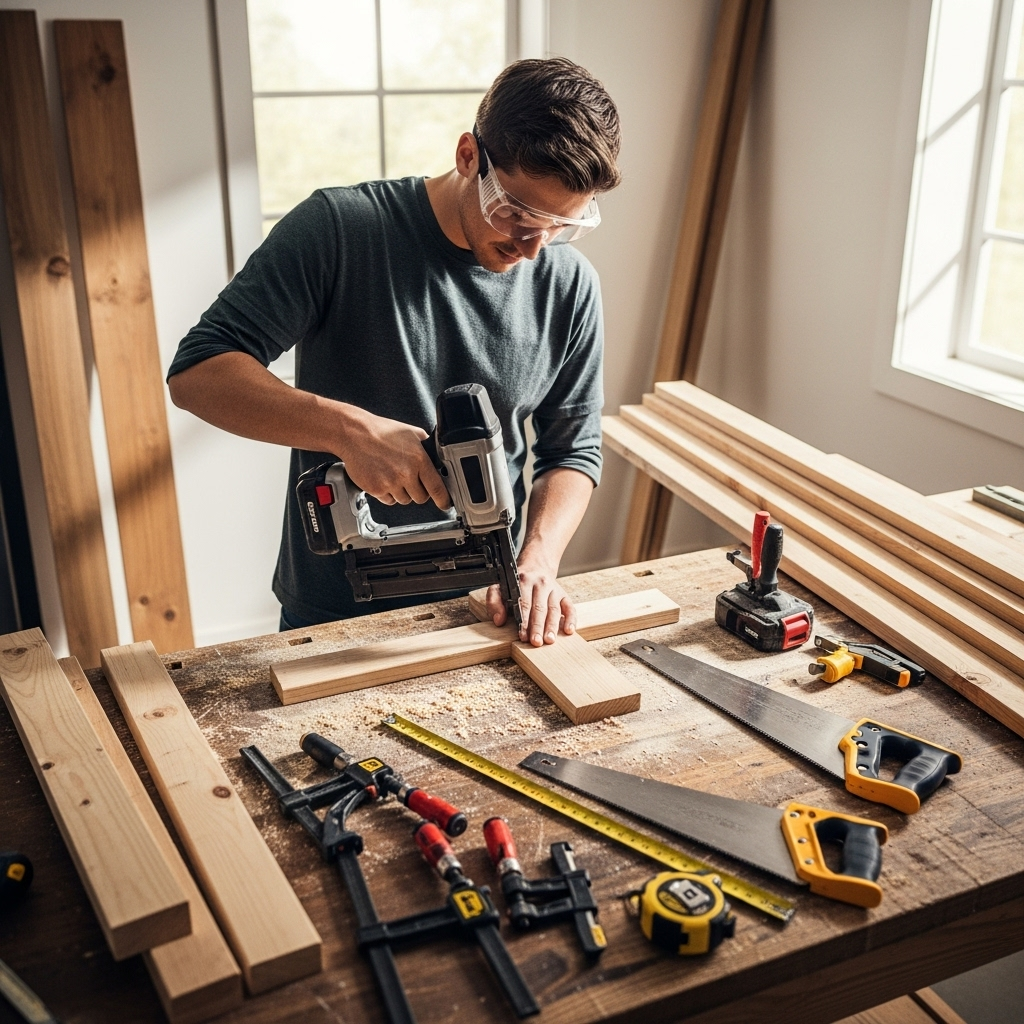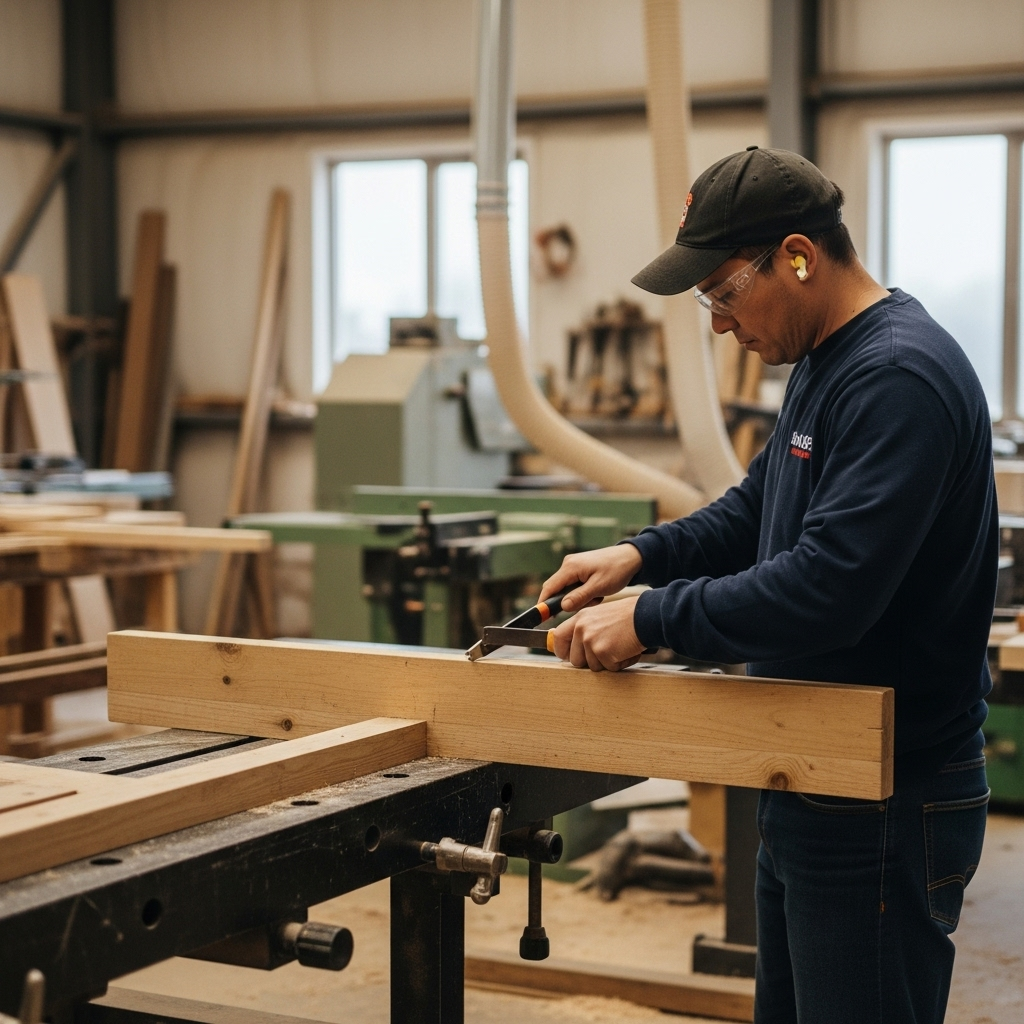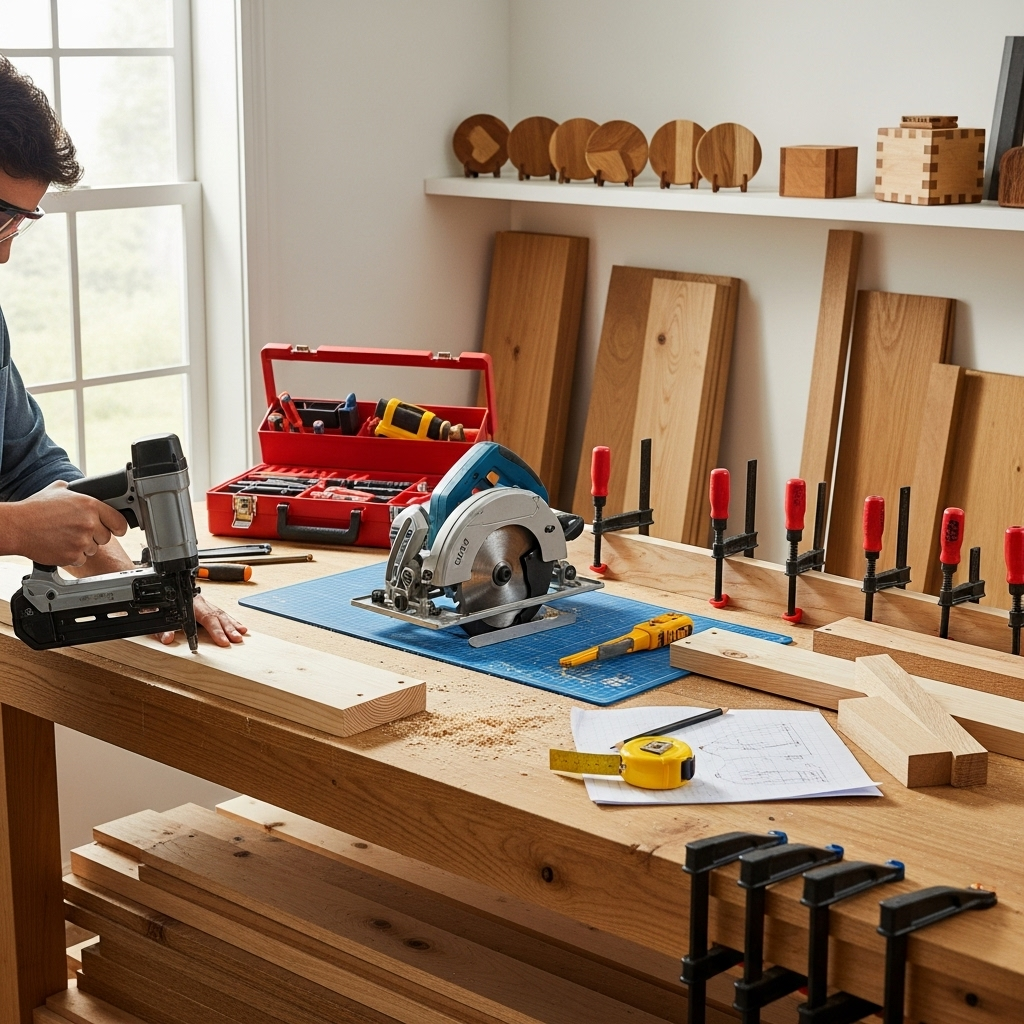Quick Summary: A roofing nail gun for asphalt shingles makes installation faster and more efficient than manual nailing by driving nails precisely and consistently. Choosing the right model involves considering power, weight, and ease of use for a successful DIY roofing project.
Hey there, DIY enthusiasts! Jack Shaffer here, your go-to tool guide from Nailerguy. Tackling a DIY roofing project can seem daunting, especially when it comes to laying down those thousands of asphalt shingles. The thought of hammering each one in place by hand? That’s enough to make anyone’s arm ache just thinking about it! But what if I told you there’s a way to make this crucial part of your roofing job go much smoother, faster, and with better results? Enter the roofing nail gun. It’s a game-changer for asphalt shingles. We’re going to dive deep into everything you need to know to pick the perfect one and use it like a pro, ensuring your roof is secure and looks fantastic. Stick around, and let’s get your roof project under control!
Table of Contents
Why a Roofing Nail Gun is Your Best Friend for Asphalt Shingles
Let’s face it: hammering thousands of nails for a single roof project is no small feat. It’s physically demanding, time-consuming, and frankly, a bit monotonous. That’s where a roofing nail gun for asphalt shingles steps in to save the day. It’s designed specifically for this job, meaning it can significantly speed up your roofing tasks, potentially cutting your installation time in half or even more. Beyond speed, it ensures each nail is driven to the correct depth, preventing premature shingle damage or roof leaks. Think of it as having an extra, super-efficient hand on the job!
The Benefits You Can’t Ignore
Using a dedicated roofing nailer offers a bunch of advantages:
- Speed: This is probably the biggest draw. You can drive nails much faster than with a hammer.
- Consistency: The tool drives nails to a consistent depth every time, which is vital for shingle integrity and weatherproofing.
- Reduced Fatigue: Less hammering means less strain on your arms, shoulders, and back. This is a huge plus, especially on a hot day or when working on a steep pitch.
- Accuracy: It places nails precisely where they need to go, adhering to manufacturer specifications.
- Professional Finish: Consistent nailing leads to a cleaner, more professional-looking roof.
When Might Manual Nailing Be Okay? (Spoiler: Not for Asphalt Shingles!)
For most roofing projects involving asphalt shingles, manual nailing is simply not recommended. The sheer volume of nails and the need for precise, consistent depth make it impractical and risky. While you might use a hammer for minor repairs or very small structures, for a full roof replacement or installation, a roofing nail gun is essential. Think of it this way: you wouldn’t build a house with a hand drill, would you? Same principle applies here!
Types of Roofing Nail Guns for Asphalt Shingles

When you’re looking for a roofing nail gun, you’ll primarily find two main types powered by different sources:
1. Pneumatic (Air-Powered) Roofing Nail Guns
These are the workhorses of the roofing world. Pneumatic nailers use compressed air from an air compressor to drive their nails. They are known for their power, durability, and reliability, making them a top choice for professionals and serious DIYers.
Pros of Pneumatic Nail Guns:
- Powerful: They can handle tough roofing materials and drive nails deep into the sheathing.
- Lightweight (Tool Itself): While the compressor adds weight to the overall setup, the nail gun itself is often lighter than cordless models.
- Durability: Typically built for heavy, continuous use.
- Cost-Effective (Long Term): Once you have a compressor, the nail guns themselves can be more affordable.
Cons of Pneumatic Nail Guns:
- Requires an Air Compressor: This is an additional piece of equipment you need to purchase, transport, and maintain.
- Hose Management: You have to deal with an air hose, which can get tangled or restrict movement.
- Noise: Compressors can be quite loud.
- Less Portable: The whole setup (compressor, hose, nailer) isn’t as mobile as a cordless option.
2. Cordless (Battery-Powered) Roofing Nail Guns
These are newer to the scene and offer incredible convenience. Cordless roofing nailers have the battery and motor built right into the tool. They are perfect for DIYers who value portability and want to avoid the hassle of air hoses and compressors.
Pros of Cordless Nail Guns:
- Ultimate Portability: No cords, no hoses, just pick it up and go. This is fantastic for maneuverability on the roof.
- Ease of Use: Simple to set up and operate, especially for beginners.
- No Compressor Needed: Frees up space and eliminates the need for another piece of equipment.
- Quieter Operation: Generally less noisy than pneumatic systems.
Cons of Cordless Nail Guns:
- Power: While improving rapidly, some cordless models might not feel as powerful as their pneumatic counterparts, especially for very dense roofing materials or deep nailing.
- Battery Dependence: You need charged batteries. Running out of power mid-job can be a setback.
- Weight: The battery and motor add weight to the tool itself.
- Higher Initial Cost: Cordless tools often come with a higher upfront price tag, especially when factoring in batteries and chargers.
Key Features to Look for in a Roofing Nail Gun
When you’re shopping for a roofing nail gun, don’t just grab the first one you see! Consider these important features to ensure you get the right tool for your asphalt shingle roofing project:
1. Nail Size Compatibility
Roofing nailers use specific nails, often called roofing nails or cap nails. You’ll want to make sure the nail gun you choose can handle the standard sizes used for asphalt shingles. Most roofing nailers are designed for 1-inch to 1.75-inch roofing nails. Check the specifications of the tool and the nails recommended by your shingle manufacturer. Did you know that the National Roofing Contractors Association (NRCA) provides guidelines? For example, asphalt shingles typically require nails that are at least 1 inch long and have a head diameter of no less than 3/8 inch. You can find more detailed installation manuals on manufacturer websites like GAF.
2. Power Source and Type
As we discussed, you’ll be choosing between pneumatic and cordless. For most DIYers, especially those taking on a roof for the first time, a cordless model offers a much simpler starting point. If you or someone you know already has a good air compressor and hose system for other projects, a pneumatic nailer might be a more economical choice and offer robust power.
3. Weight and Ergonomics
You’ll be holding this tool overhead and at awkward angles for hours. A lightweight nailer with a comfortable grip and good balance is crucial. Many professional-grade tools are designed with ergonomics in mind. Try to hold the nail gun if possible before buying, or read reviews that specifically mention comfort and weight distribution.
4. Depth Adjustment
This is a critical feature. You need to be able to adjust how deep the nail is driven. Over-driving a nail can cut through the shingle and compromise its waterproofing. Under-driving leaves the nail proud, which can damage subsequent shingles. Most good roofing nailers have an easy-to-use depth adjustment dial.
5. Nail Jam Clearance
Nail jams happen. It’s a fact of life with any nail gun. Look for a tool that offers tool-free jam clearance or is very easy to access for clearing jams quickly. This will save you a lot of frustration and downtime on your roof.
6. Safety Features
Safety is paramount. Ensure the nail gun has a contact-trip mechanism. This means the nailer will only fire when the nose is pressed against the surface you’re nailing. This prevents accidental firing. Some also have safety triggers that require pulling the trigger as well as pressing to the contact surface.
7. Magazine Capacity
The magazine is where the nails are held. A higher capacity means you can fire more nails before needing to reload, which increases efficiency. Most roofing nailers hold a full coil of nails, but the number of nails per coil can vary.
Essential Accessories You’ll Need

Beyond the roofing nail gun itself, you’ll need a few other things to have a productive and safe roofing day:
- Nails: Get the right type and size of roofing nails specified by your shingle and nail gun manufacturer. You’ll need thousands!
- Air Compressor and Hose (for Pneumatic): If you opt for pneumatic, ensure your compressor can provide the required PSI and CFM for the nail gun. You’ll also need a good quality air hose.
- Batteries and Charger (for Cordless): Make sure you have at least one fully charged spare battery ready to go. Consider purchasing an extra battery if you plan to work for extended periods.
- Safety Glasses: Absolutely non-negotiable. Flying debris or nail fragments are a real hazard.
- Work Gloves: Protect your hands from splinters, sharp edges, and general job site wear and tear.
- Roofing Safety Harness and Rope: Especially if your roof has a steep pitch or you’re not accustomed to working at heights. Safety should always come first. You can find excellent resources on roofing safety from the Occupational Safety and Health Administration (OSHA) here.
- Tool Lubricant (for Pneumatic): If your pneumatic nailer requires it, use the specified lubricant to keep it running smoothly.
Step-by-Step Guide: Using Your Roofing Nail Gun for Asphalt Shingles
Alright, let’s get down to the nitty-gritty. Using a roofing nail gun is straightforward, but following these steps will ensure you do it safely and effectively.
Step 1: Read the Manual and Inspect Your Tool
Before you even connect air or a battery, read the user manual for your specific nail gun. Familiarize yourself with its parts, controls, and safety features. Inspect the tool for any damage. For pneumatic, check the air inlet and ensure it’s clean.
Step 2: Set Up Your Nail Gun
- For Pneumatic: Connect the air hose to your compressor and the nail gun. Ensure your compressor is set to the manufacturer’s recommended PSI (pounds per square inch). This is typically between 70-120 PSI for roofing nailers.
- For Cordless: Ensure your battery is fully charged and properly inserted into the tool.
Step 3: Load the Nails
Most roofing nail guns use a coil magazine. You’ll typically insert a coil of nails into the magazine, orienting them correctly so they feed smoothly. Check your manual for the specific loading procedure. Make sure you’re using the correct size and type of roofing nails!
Step 4: Adjust the Depth Setting
This is crucial. Set the depth adjustment knob or lever to the recommended depth for your shingles. Often, the ideal nail penetration is about 1/2 to 3/4 inch into the wood sheathing, with the nail head just slightly dimpling the shingle surface without breaking it. Test this on a spare piece of shingle over some scrap wood. Fire a test nail and check the depth visually and by feel. Adjust as needed.
Step 5: Position Yourself Safely
Ensure you have stable footing. If you’re on a ladder or the roof, use a fall protection system if necessary. Have your materials (shingles, nails) within easy reach. Work from the bottom of the roof upwards.
Step 6: Nailing the Shingles
Hold the nail gun firmly against the shingle. The contact trip mechanism (the little foot at the nose of the gun) needs to be pressed against the shingle first. Then, pull the trigger. The nail should drive precisely into the shingle and sheathing. The correct nailing pattern for asphalt shingles is vital; consult your shingle manufacturer’s installation guide. Generally, nails are placed about 5 to 6 inches from the edge of the shingle and 1 inch from the top of the next shingle’s exposed section, forming the shingle’s “nailing strip.”
Important Note on Nailing Location:
- Always nail into the solid wood sheathing.
- Never nail into the shingle’s adhesive strip, as this weakens the seal.
- Avoid over-nailing (nail head breaks the asphalt mat) or under-nailing (nail head proud of shingle surface). See the diagram below for visual guidance.
Here’s a general visual representation of proper nailing placement, though always refer to your specific shingle manufacturer’s guide:
(Imagine a diagram here showing a shingle with correct nail placement indicated by arrows, typically in a strip about 5-6 inches from the bottom edge and 1 inch from the top of the exposed portion.)
Step 7: Reload and Repeat
Once the magazine is empty or nearing empty, reload the nails. Continue working your way across the roof, shingle by shingle, row by row. Take breaks as needed.
Step 8: Clearing Jams
If a jam occurs, disconnect the air supply or remove the battery for safety. Follow your tool’s manual for the specific jam-clearing procedure. Most require opening a cover on the magazine and carefully removing the bent nail.
Troubleshooting Common Roofing Nail Gun Issues

Even the best tools can act up. Here are a few common issues and how to solve them:
Problem: Nail Gun Not Firing
- Check Power: For pneumatic, is the air compressor running and delivering sufficient pressure? Is the hose connected? For cordless, is the battery charged and properly seated?
- Depth Adjustment: Sometimes, if the depth is set too high, it can prevent firing.
- Contact Trip: Ensure the nose of the gun is pressed firmly against the surface.
- Safety Lock: Some tools have a safety lock that might be engaged.
- Jammed Nail: A hidden jam could be preventing it from firing.
Problem: Nails Not Driving Deep Enough (Under-driven)
- Air Pressure (Pneumatic): Increase the PSI slightly at the compressor.
- Depth Adjustment: Adjust the depth setting to drive nails deeper.
- Battery Power (Cordless): A weak battery might not have enough power.
- Tool Wear: Internal components may be wearing out, reducing power.
Problem: Nails Driving Too Deep (Over-driven)
- Depth Adjustment: Adjust the depth setting to sink nails less deeply.
- Wire Gauge: Ensure you’re using the correct gauge of nails; thinner nails might be over-driven more easily.
- Sheathing Density: Very soft sheathing might allow over-penetration.
Problem: Frequent Nail Jams
- Nail Quality: Using cheap or bent nails can cause frequent jams. Always use quality, compatible nails.
- Magazine Alignment: Ensure the nails are loaded correctly and feeding smoothly.
- Tool Maintenance: A dirty or un-lubricated tool can jam more often, especially pneumatic models.
- Angle of Firing: Firing at an extreme angle can sometimes cause jams.
Comparing Top Roofing Nail Gun Brands (Examples)
While specific models change, here are some reputable brands known for their roofing nail guns. It’s always best to check current reviews for the latest and greatest!
| Brand | Typical Strengths | Potential Downsides | Ideal User |
|---|---|---|---|
| Senco | Durable, reliable pneumatic options. Good power and consistency. | Pneumatic models require a compressor. Cordless options can be pricier. | Professionals and serious DIYers looking for a robust, workhorse tool. |
| Metabo HPT (formerly Hitachi) | Excellent pneumatic models, known for performance. Good range of cordless. | Some users find the cordless slightly heavier. | DIYers and professionals valuing power and a solid brand reputation. |
| DEWALT | Strong contender in cordless, offering good battery integration and power. User-friendly. | May not match the sheer raw power of some top-tier pneumatics for extremely tough jobs. | DIYers and contractors prioritizing cordless convenience and Dewalt’s battery ecosystem. |
